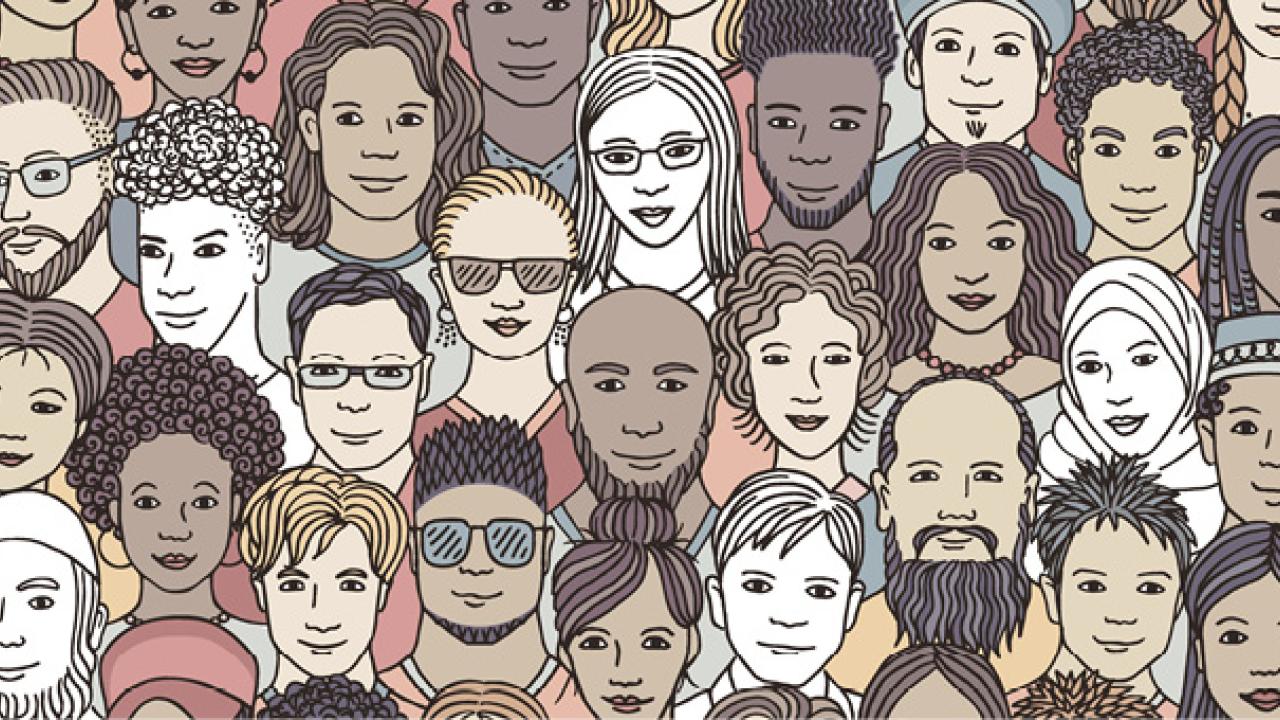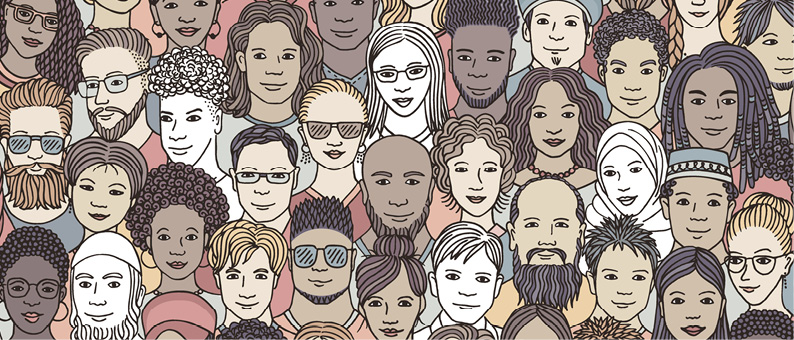
It Takes a Village
Supporting DEIB Efforts in the Veterinary Field
Published online for American Animal Hospital Association
by Linda Childers
A lifelong lover of animals, Tierra Price, DVM, MPH, remembers watching the movie Dr. Doolittle as a child and feeling inspired by Eddie Murphy’s title character, a Black physician who cared for animals. Yet in real life, Price found that Black veterinarians were a statistical anomaly. It wasn’t until she turned 19 and participated in a veterinary program for minority undergraduates that she first met a Black veterinarian.
Price’s situation isn’t unique. According to 2022 data from the Bureau of Labor Statistics (BLS), approximately 91.4% of veterinarians are white, 2.2% are Black, 4.3% are Asian, and 0.5% are Hispanic/Latinx.
To help other Black veterinarians, students, techs, and assistants find mentorship and support, Price, who now works as a community medicine veterinarian in Los Angeles, California, launched BlackDVMNetwork.com, an online platform in 2018.
“As a veterinary student, I often felt isolated from my classmates and colleagues,” Price said. “To connect with others, I started an Instagram (@blackdvmnetwork) to connect with other Black veterinarians and veterinary students and quickly learned there was a gap in resources for Black veterinary professionals.”
Price decided to develop her Instagram account into Black DVM Network, a networking community she wishes had existed when she first started veterinary school. Today, the organization offers webinars, a directory of Black veterinary professionals, and support to members, especially those who have experienced racism.
The topic of increasing diversity, equity, inclusion, and belonging (DEIB) in the veterinary field isn’t new, and there are many initiatives underway to recruit and retain a diverse workforce. But professional organizations such as Black DVM Network can’t undertake this work alone.
“To catalyze lasting change, we must drive awareness of why diversity, equity, inclusion, and belonging are valuable to our profession and the people we serve,” said Jennifer Ogeer, DVM, MSc, MBA, MA, vice president of medical science and innovation at Antech Diagnostics and chair of the Diversify Veterinary Medicine Coalition (DVMC). “Through the DVMC website, social media presence, and events, we facilitate storytelling and fellowship, creating a coalition for change inclusive of our broader colleagues and professional associations.”
As a nonprofit, DVMC brings together veterinary leaders from diverse backgrounds who are committed to increasing BIPOC (Black, Indigenous, and People of Color) representation in the veterinary community. They believe this will not only make the veterinary field more inclusive, it will also improve access and expand quality of care for more animals.
Ogeer said the mission of the DVMC (diversifyvetmed.org), established in 2020, is to create lasting and significant change, sparking a movement that ensures the veterinary profession is synonymous with diversity, equity, inclusion, and belonging. “The goal of DVMC is to support a diverse group of veterinary students at each step in their educational journey—from youth to adulthood,” Ogeer noted.
Since financial support is a key barrier for many BIPOC students who want to enter veterinary medicine, Ogeer said that DVMC works to reduce financial barriers by offering students scholarships, internships, and educational and travel grants.
Resources to Help Increase DEIB in Your Practice |
A number of affinity groups exist within the veterinary field that welcome new members who are committed to taking action and ensuring DEIB.PrideVMC (pridevmc.org), an organization that represents the LGBTQ+ community. Their website provides allyship resources, a conscious language guide, tips on how to create an inclusive practice, a job board, and more. Black DVM Network (blackdvmnetwork.com) offers a vibrant online networking community, a forum for safe discussions, a job board, a directory of Black veterinarians, webinars, and more. Latinx Veterinary Medical Association (LVMA) (latinxvma.org) focuses on professional development, mentorship, outreach, and scholarships designed for Hispanic and Latinx veterinary students and professionals working in the veterinary field. Multicultural Veterinary Medical Association (mcvma.org) is for any veterinary professional looking to promote diversity and cultural competency in the field. They offer a variety of initiatives designed to promote DEI in the workplace, as well as scholarships, awards, and grants for students and events for veterinary professionals. American Association of Veterinarians of Indian Origin (aavio.org) has regional chapters, events, resources, and networking opportunities for veterinarians of Indian origin. Association of Asian Veterinary Medical Professionals (aavmp.org) offers a space where Asian preveterinary and veterinary professionals can find support, mentoring, and scholarships and connect with other Asian veterinary professionals internationally. Women’s Veterinary Leadership Development Initiative (wvldi.org) is where women in the veterinary field can learn leadership skills, network with their peers, learn about jobs and volunteer opportunities in the field, and more. National Association for Black Veterinarians (nabvonline.org) is a nonprofit offering an annual conference held in June, scholarships, a directory of Black veterinary professionals, a job board, and more. They are committed to providing mentoring and support to Black veterinary professionals across the country. Prefer to be a mentor or become involved in a new diversity initiative? Consider the following:Mentorvet (mentorvet.net) offers mentors and professional development programs to promote early career well-being. Scholarships are also offered to students pursuing a career in veterinary medicine. Journey for Teams (journeyforteams.org) is a profession-wide program that engages veterinary professionals to enhance DEI efforts. Designed for animal hospitals, vet practices, academia, and other veterinary settings, Journey for Teams is sponsored by the American Veterinary Medical Association (AVMA) and Veterinary Medical Association Executives (VMAE). |
Becoming Advocates for Change
Creating a diverse, equitable, and inclusive veterinary community demands sustained effort, continuous improvement, and accountability, said Karl Jandrey, DVM, MAS, DACVECC, associate dean, admissions and student programs and professor of clinical small animal emergency and critical care, at the University of California, Davis School of Veterinary Medicine.
“Since the majority of veterinary leaders are older, white men, DVMs and other leaders in the veterinary profession can begin by asking themselves who is represented in and by their organization, as well as who is missing from their organization and the population they serve,” Jandrey said. “The next step is to begin to amend those deficiencies.”
Jandrey encourages veterinarians, especially those who aren’t in underrepresented groups, to strive to surround themselves with staff who aren’t like them. “Search for employees with different backgrounds, experiences, and educational levels,” Jandrey said. “Attempting to mix up the homogeneity in their everyday lives—both at work and in their community—should be the goal of veterinarians on a daily basis.”
Besides being the right thing to do, having a diverse veterinary practice makes good business sense. The National Society for Leadership and Success (NSLS) noted that “cognitive diversity,” which mixes different thinking-styles, habits, and perspectives, creates a sense of community within a practice, and helps teams solve problems more quickly and efficiently. A report by McKinsey and Company also found that diverse practices outperform their less diverse peers by 36% in profitability.
Learning to Be an Ally
Jandrey says there are many affinity veterinary organizations representing BIPOC or other underrepresented and underserved populations that are open to all veterinarians.
“Whether a veterinarian identifies with an affinity group that focuses on DEIB or is an ally, supporting these affinity groups through active membership can allow veterinarians to understand the common struggles we all face,” he said. “Those struggles that aren’t common can be discussed and tackled from many levels when everyone can add important value to the resolution.”
Jackie Dueñas, DVM, of Sunset Animal Clinic in Miami, Florida, said she was fortunate to grow up in Miami with Latinx and Hispanic veterinarians who served as her role models. She acknowledges that not all veterinary staff may reside in a diverse area and said that affinity groups such as the Latinx Veterinary Medical Association (LVMA), of which she is a member, provide valuable resources to all veterinary professionals.

“Since the majority of veterinary leaders are older, white men, DVMs and other leaders in the veterinary profession can begin by asking themselves who is represented in and by their organization, as well as who is missing from their organization and the population they serve.”
—KARL JANDREY, DVM, MAS, DACVECC
Dueñas said allies who want to learn more about the Latinx culture can join LVMA for a membership fee of $10 a year. The organization launched in 2020 to empower Latinx veterinary professionals and provide scholarship, mentorship, professional development, and community outreach to veterinary students and prospective students.
“In a previous role, I visited local schools to talk about pet ownership and to also generate an early interest in the veterinary field,” Dueñas said.
In addition, emphasizing a culture that promotes DEI principles is a win-win for both veterinary practices and clients, said Dueñas.
“Having an inclusive veterinary practice enables veterinary staff to understand cultural differences in the ways our clients see pets,” Dueñas says. “In a lot of Hispanic communities, pets are viewed differently; for example, my grandma, who is Cuban American, once made a comment that pets in Cuba never get sick. It’s not that they don’t get sick, but life in Cuba is very different. With families struggling to provide for themselves, medications such as heartworm prevention and flea and tick are considered luxuries.”
Committing to Hiring and Training a Diverse Staff
Pets now live in 67 million households, and multicultural pet owners represent a growing percentage. According to a study by Packaged Facts, between 2008 and 2018 the increase in the number of Hispanic, African American, Asian, and other multicultural pet owners was five times higher than the increase in the number of non-Hispanic white pet owners.
To ensure a veterinary practice is more inclusive, Price emphasized that it’s important to address culture. “Recognize that communication, style, and beliefs can vary among people and that those differences can make your practice stronger,” she said.
When looking to add veterinary staff, Jandrey suggested casting a wide net and reaching out to colleagues, veterinary schools, and job boards offered by affinity groups in order to identify BIPOC candidates.
“Today’s veterinary school grads are looking to work in a culture that incorporates diversity, environmental sustainability, and a future-focused mindset,” Jandrey said, citing a recent paper written by his students for the AVMA Journal. “Through word-of-mouth, veterinarians can actively look for diverse candidates to join their practice.”
In addition, Ogeer said DVMC provides resources that can help veterinary professionals interested in offering diversity training at their practice and addressing unconscious bias.
A diverse staff can also remove communication barriers with clients. Dueñas said affinity organizations such as LVMA can help veterinary practices connect with bilingual candidates when they have job openings and offer Spanish-language resources.
“If a client only speaks Spanish, it can be difficult to explain why their pet needs a specific treatment or diagnostic test,” she said. “If you can’t effectively communicate with your clients, it’s the pets that lose out.”
